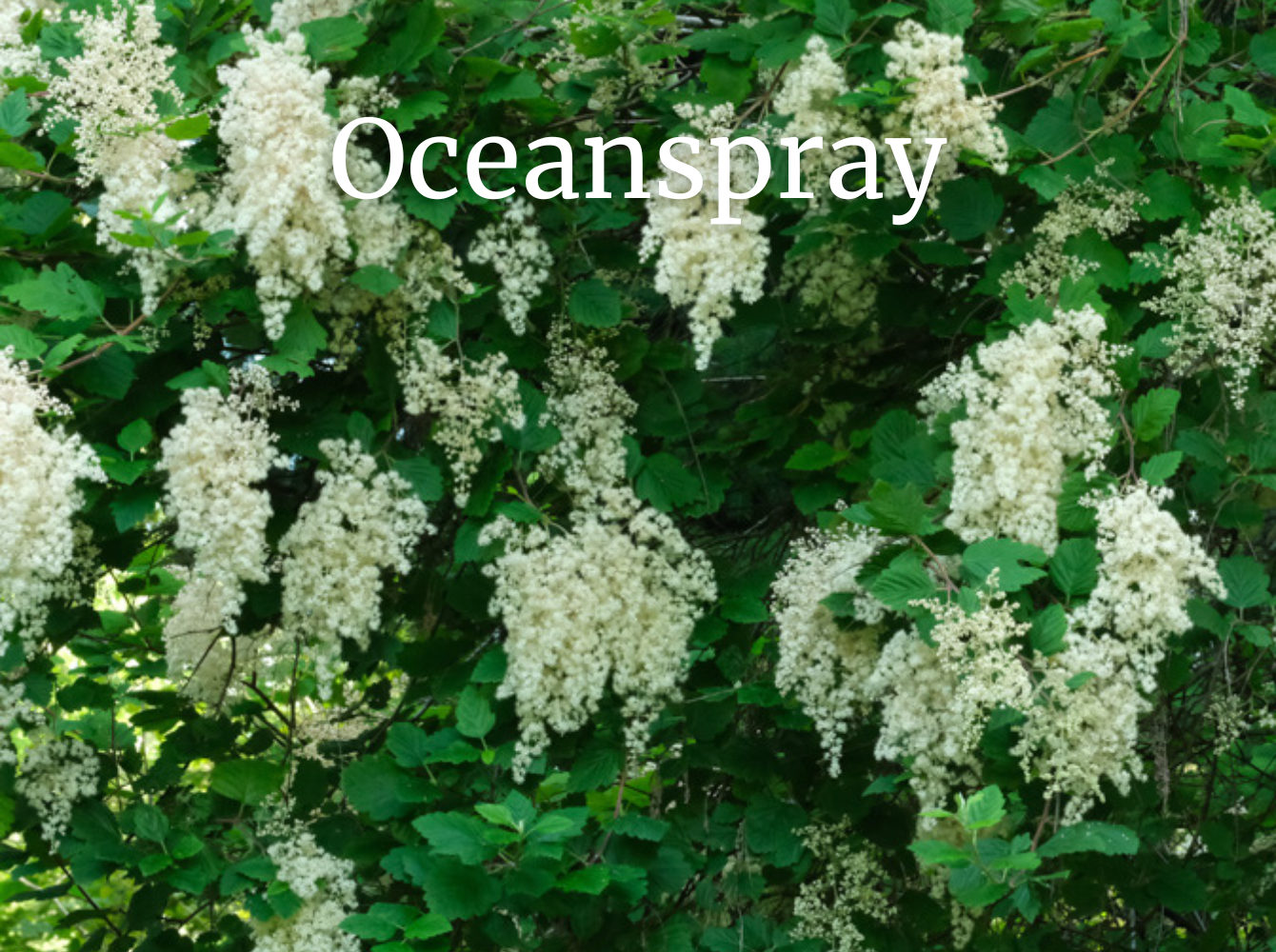Oceanspray is one tough shrub, also known as ironwood because of the strength and hardness of its wood. Don't let the delicate sprays of white flowers fool you - this plant is more than just a looker. The Saanich made halibut hoods out of its wood. HALIBUT HOOKS. The pacific halibut is one of the largest flat fish, weighing up to 500 pounds and reaching a length of 8 feet long. Younger halibut weigh considerably less than that, but it is still an impressive thought that a wee hook of Oceanspray could land a large fish. Fun fact about halibut: they begin life as a larva with an eye on each side of their head, and when they are about an inch long the left eye migrates over the snout and joins the right eye on one side of its body. Cool and creepy, no? But this is not Ichthyology with Igor, so back to the plant...
Oceanspray is a shrub with several main stems that arch gracefully away from the base, and in June and July you'll see cream colored clusters of flowers at the ends of the stems that resemble white lilacs and give the plant its name because of their foamy appearance. These flowers eventually turn brown and remain on the plant over the winter. The Lummi boiled these brown flowers to make an infusion used for treating diarrhea, and the Chehalis used an infusion of the seeds for treating infectious diseases like smallpox, black measles, and chickenpox.
The leaves are roughly triangular, having both shallow lobes and fine teeth. The deep green upper surface has distinct veins, and the lower surface is a duller green, both sides taking on a reddish tinge in fall. The Lummi put the leaves on sore lips and feet. The brownish peeling bark was valued by the Makah and used to make a tea tonic for convalescents and athletes according to Erna Gunther.As the common name ironwood might suggest, this plant was most highly valued for its wood. Virtually all coastal groups south of British Columbia used it for crafting a wide variety of tools. They used it to create duck and flounder spears, salmon roasting sticks (because of its resistance to burning), digging sticks for camas, bows and arrows, cattail mat needles, inner bark scrapers, and knitting needles. The hard wood was made even harder by heating it over a fire and pollishing it with horsetail. Oceanspray pegs were used in construction before nails were widely available.
Oceanspray provides good cover for small mammals and tree frogs, but in general wildlife don't find it to be particularly palatable. I have however seen many iridescent trails of slug slime on this plant, so maybe they like it, or maybe they just like to use the arched stems as a launching point for their aerial mating rituals. As this is not Mollusks with Melanie, I'll leave you to look that up on your own.





